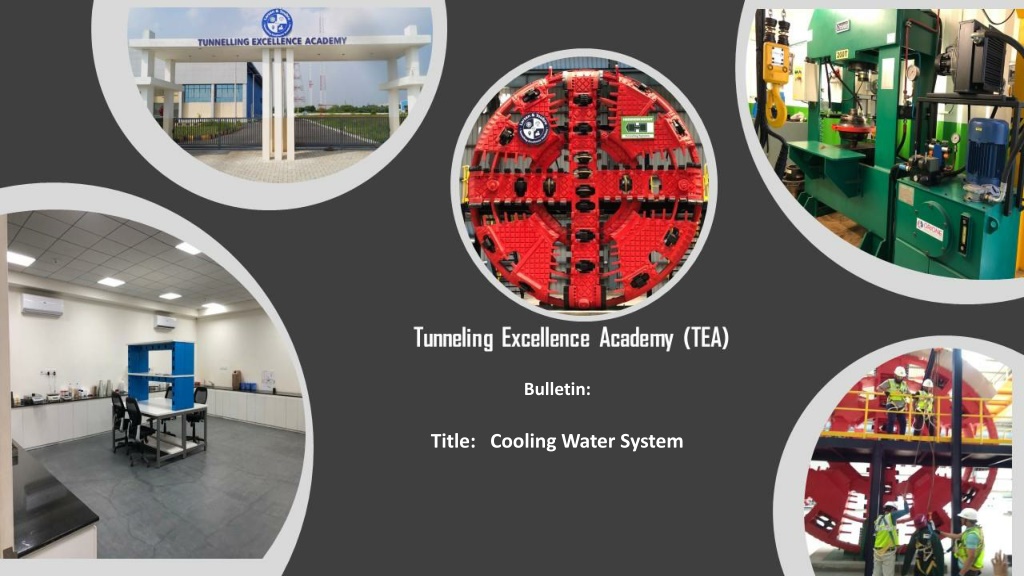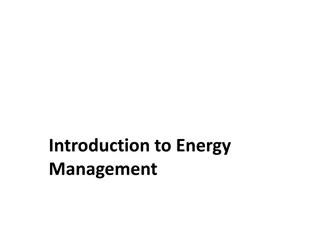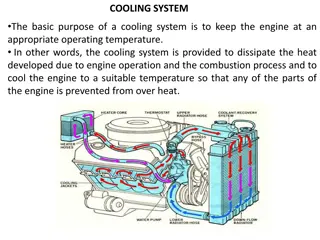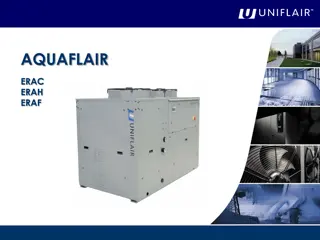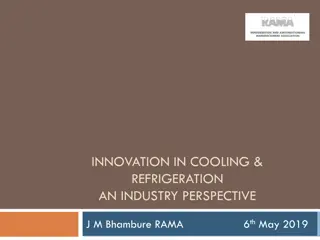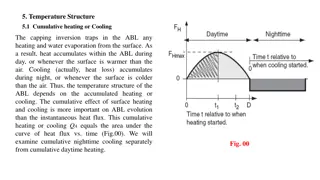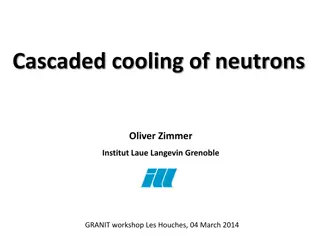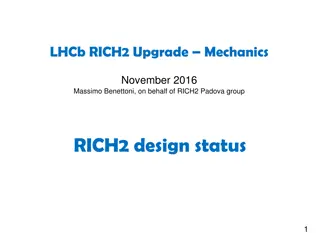Cooling Water Systems in Construction: Overview and Risk Management
Understanding the operation of cooling water systems in construction, specifically focusing on cooling towers and their usage in Tunnel Boring Machines (TBMs). Importance of proper maintenance to prevent the growth of Legionella bacteria and mitigate the risk of Legionnaires' disease. The process of how cooling towers work to maintain safe temperatures for machinery and the potential health hazards associated with contaminated water in these systems.
- Cooling Water Systems
- Construction Risk Management
- Legionella Bacteria
- Legionnaires Disease
- Tunnel Boring Machines
Download Presentation

Please find below an Image/Link to download the presentation.
The content on the website is provided AS IS for your information and personal use only. It may not be sold, licensed, or shared on other websites without obtaining consent from the author. Download presentation by click this link. If you encounter any issues during the download, it is possible that the publisher has removed the file from their server.
E N D
Presentation Transcript
Bulletin: Title: Cooling Water System Sensitivity: LNT Construction Internal Use
Cooling Tower How A Cooling Tower Works? Chilled water is pumped underground from circa 100 to 200m volume storage tanks (per TBM) located above ground, at a temperature of around 22deg/c. The water is on an open circuit and is returned back up to the surface at a rate of approx. 70m /hr, from here the chilled temperature is maintained. The chilling water is used to cool down an enclosed TBM chilling water system that maintains the electrical driven cutter head motors and hydraulic power systems to a working temperature to less than 50deg/c. The surface mounted cooling tower works by the following methodology: Hot water is fed into the inlet of the tower and pumped up to the header. The header contains nozzles and sprinklers which are used to spray water, from hereon, the water comes to a section titled PVC filling, That is used to reduce the speed of the water. At the top of the cooling tower, fans are used to lift air from the bottom to the top, that are main contributory operation that dissipates the heat from the water. Because of its slow speed and more contact area of water, it makes a good connection between air and hot water. The process will reduce the temperature of water by evaporation process and cooled water is collected at the bottom of the cooling tower, and this cooled water is used again in the TBM Sensitivity: LNT Construction Internal Use
Cooling Tower TBM Water External Cooling Circuit Schematic Diagram Water Supply 1. External Cooling water feed From surface cooling tower and cool the existing hot water inside TBM and the same water back to the surface tower. Intake water 15m /h, Out coming water 10m /h. 2. Cooling water tunnel IN cold 22 C 3. Cooling Water Tunnel Out 35 C Water Tank Fire Sprinkler Water Pipe Cooling water IN (15m /h) Cold 22 C TBM usage water Tunnel 500mts 500mts 500mts 500mts 500mts Colling Water OUT (10m /h) Hot 35 ? Heat Exchanger Centrifugal Pump Sensitivity: LNT Construction Internal Use
Cooling towers and Legionnaires' disease Expert management is required of cooling systems as they are areas for heat loving bacteria to breed and can result in localised infection of very serious fatality type diseases. The main bacteria located in cooling towers is the Legionella bacteria that will produce illness in persons similar to Pneumonia or Covid 19 symptoms. It is known to be highly fatal to the elderly or persons with low immunity and particularly in hospital patients. It must be considered that the contaminated water will become airborne into the environment at the top of the cooling tower, where the cooling effect of condensation occurs. The contamination can also be spread into tunnel workers from the action of breathing on droplets from sprayed chilled water underground. Most countries have very strict controlled management requirements of these systems, that become more strict within close proximity to residential areas, elderly care homes or hospitals. This control is normally carried out by providing expert contractor to visit the site at regular intervals to test the water and provide continuous chlorination and cleaning of the towers and storage tanks. This is a highly regulated operation and strict controls must be adhered to what temperature will kill legionella? It needs to live in a temperature range of between 20 and 50 C, above 50 C it will start to die off. Heat will kill legionella bacteria, cold will not. If you have water below 20 C it will go into hibernation, it will not die. Sensitivity: LNT Construction Internal Use
TBM Water Internal Cooling Circuit Schematic Diagram 1. Internal cooling water: Only rotate inside of the TBM cooling system. 2. Flow: Less Then 1M /min 3. KW: 7.5 4. Antifreeze coolant mix with water: The mixing ratio of water and antifreeze for TBM internal cooling circuit should lie between 70:30 and 80:20. Air Realise Valve TBM Closed Cooling System Pressurize Tank Vertical Multi stage Centrifugal Pump HYD Tank Heat Exchanger Water Gear Oil (Main Drive) VFD CH Motor Pump/Motor In Hot 35 C OUT Heat Exchanger IN Cold 22 C Out Sensitivity: LNT Construction Internal Use
End Sensitivity: LNT Construction Internal Use
